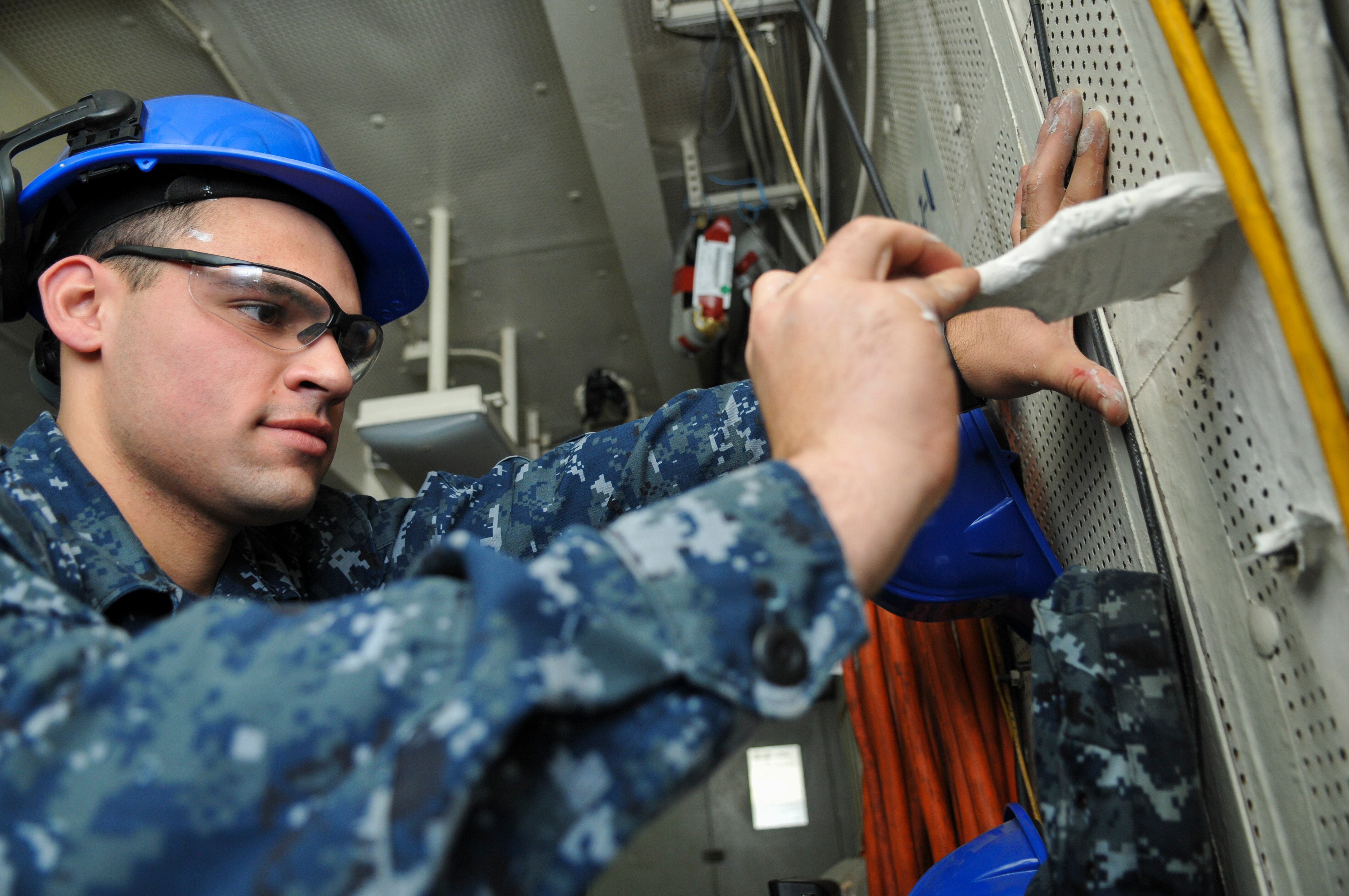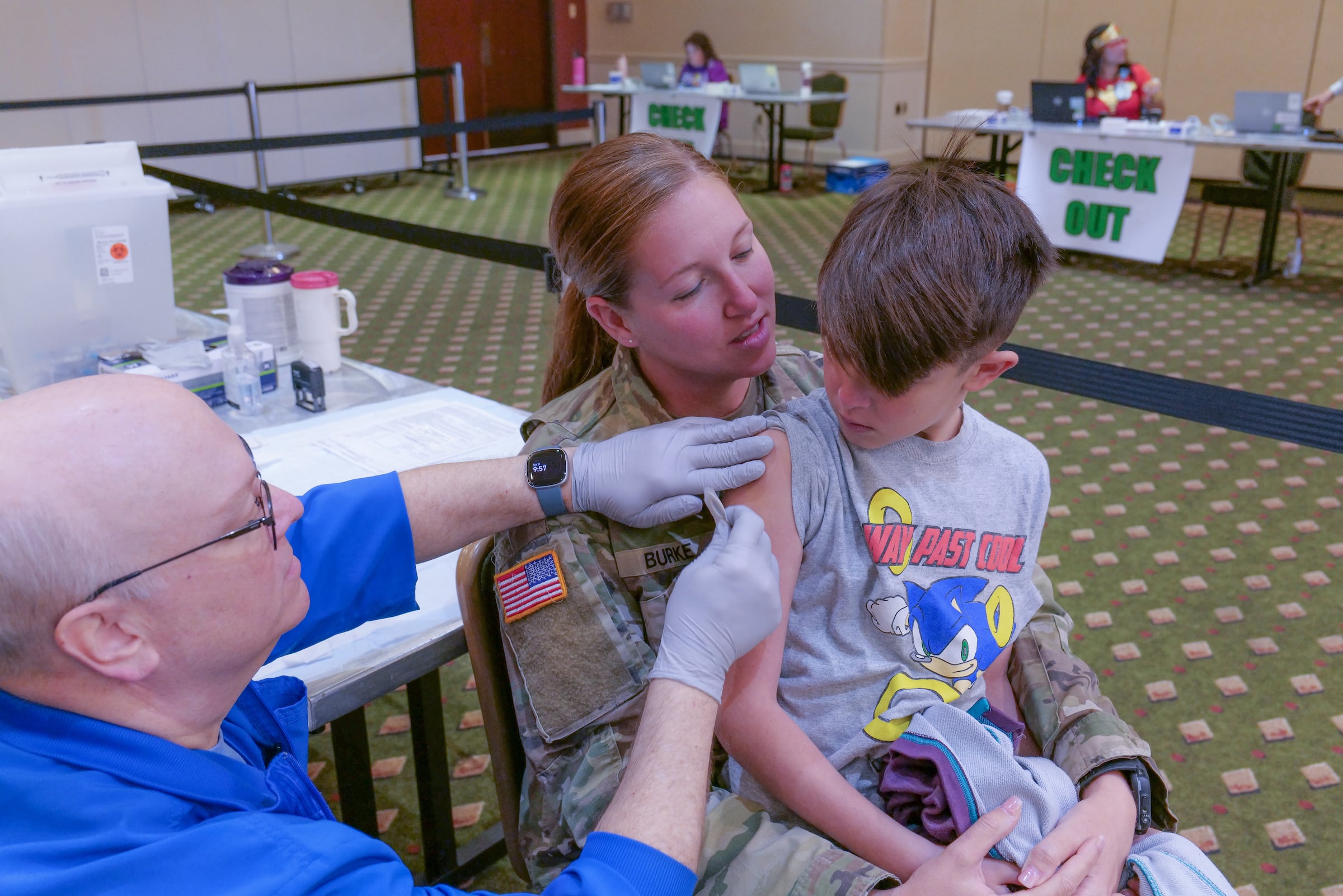![121106-N-NB694-041[ID=26593763] ID=26593763](http://www.gannett-cdn.com/-mm-/99998059e7fe382c3e3ba8964c0931b0b59a5710/c=292-0-2859-1930&r=115x86/local/-/media/2015/04/29/GGM/MilitaryTimes/635659218563198822-NAV-USS-Abraham-Lincoln-2.JPG)
That is good news for sailors.
Getting those flattops back to the fleet on time is crucial to shortening deployments and making ship schedules predictable again. Hitting original delivery dates will provide the carriers needed to maintain predictable deployments. In an unexpected twist, it may even help a few other ships get out of the yard faster. But hitting these goals means two carriers will be in their mid-life refueling overhaul an RCOH execution phase throughout 2020. While overlaps of a couple months are not uncommon, the yearlong overlap presents an unprecedented challenge.
"This is a pretty significant shift [that] certainly creates challenges for us in regard to maintaining the workforce and that heel-to-toe efficiency," said Chris Miner, vice president of in-service aircraft carrier programs at NNS. "But this is the right thing. To stop using a ship with 50 years of life after 25 years doesn't make a lot of sense. These recapitalized carriers come out of [refueling and complex overhaul] with as much capability as any of the new carriers."
For proof, he pointed to the Abraham Lincoln, which recently hit the half-way mark in its nearly three-year overhaul. When it arrived in March 2013, the carrier was six weeks late into the yards due to Congress' continuing resolution and delay in passing the defense bill. Miner's team bumped its "Smart Start" from four to six months to knock out as much work as possible on the pier prior to dry dock, and that kept the team is on schedule to meet the original delivery date of November 2016.
The carrier passed its halfway point of yard time in early April. Like all carriers, Lincoln's two nuclear reactors will be refueled and nearly all combat, communication, and ship systems will be upgraded enhanced during the overhaul. Indeed, the Lincoln, as the fifth Nimitz-class carrier to undergo an RCOH, has received a host of awesome upgrades, but the work also revealed some unexpected problems that have forced shipbuilders to adjust fire.
Such adjustments will be increasingly common in the years ahead.
GW and beyond
Huntington Ingalls Industries' private shipyard in early February got the green light, and $224 million, for the George Washington's initial purchases and planning work. The Navy also earmarked roughly $3.5 billion for the carrier's RCOH. Service leaders had said they didn't have the cash to keep the GW active due to sequestration and the Budget Control Act of 2011. A host of lawmakers unwilling to drop to a 10-carrier fleet ensured the Navy had its money, and its marching orders.
The start of the drydock overhaul work period shifted from September 2016 to August of 2017 by the time the dust settled. The shipyard will shave some time off various periods, but the big cut will be in yard time. The typical seven-year RCOH includes 35 months of planning before yard work; GW will get 30 months.
The fact that GWeorge Washington hasn't been run as hard as sister ships could help expedite its RCOH. As Miner describes it, "she has some gas left in the tank." But this is the exception rather than the rule. Carriers have deployed far more than planned, and are seeing new and unique issues as a result. For example, the Lincoln's catapult water brakeeak — which stop the catapult's launch pistonsright? THAT IS CQ // LMB — was so worn it actually twisted. That is something civilian maintainers with 30 years' experience had never seen.
Vigor in pre-planning, use of lessons learned, and advance procurement will be the key, said Miner, who has worked RCOH on every Nimitz-class carrier. He pointed to Lincoln's "fat cats" as an example. Officials expected to replace a 6-inch area of steel along the steam catapults' troughs. But insulation changes captured additional moisture and caused significant corrosion, said Gray Milteer, superintendent of deck engineering. His team had to replace 22 inches of steel on both sides of all four catapults — 2,480 lineal feet of steel in all. Teams sent to Yokosuka, Japan, where the GW has been forward-deployed, for initial inspections found the flattop has the same problem.
"Knowing that now allows us to plan for that," Miner said. "I will have all of the steel cut and ready to install in those troughs before the ship arrives, where before I was scrambling to get all of that steel bought, cut, and prepared while the ship was here."
Something as significant as Lincoln's cat trough corrosion "is fairly unusual" because the shipyard does extensive analysis long before the ship arrives in the yard, Miner said. But unexpected work is common, growth work does happen, as there is no telling what will be found in the ship's 2,300 compartments and 600 tanks. In anticipation, the shipyard sets aside 10 percent of the 23 million man-hours it plans for an RCOH.
A problem in one carrier does not mean all will share that fate. Peak tanks in the Theodore Roosevelt, which completed its RCOH in August 2013, had "significantly more corrosion than anyone expected," said Bruce Easterson, Lincoln's RCOH program manager. The tanks had to be rebuilt, which was difficult because they are located in the narrowest parts of the bow. Workers cut a hole in the side of the ship to slide in the heavy steel needed.
Peak tanks were a priority in Lincoln's pre-planning, but were found to be "in reasonably good shape," Easterson said. "The difficulty is not that a 25-year-old ship needs work. That is expected. The trick is knowing what work is needed."
Deadlines
A delay in getting a carrier back to the fleet could lengthen adversely affect carrier strike group deployments, effects that could linger for months or years. for months, or even years down the line. To accommodate would force adjustments to schedules — and possibly lengthen deployments — on both sides of the delivery date. This is especially likely under the Optimized Fleet Response Plan, the new deployment scheme which was designed to provide predictability in deployments through carefully managed yard time and training.
Delays in the incremental availabilities, rather than the RCOH, are the bigger threat to the deployment schedules. It comes down to simple math: Every CSG ship has to come out of the yard on time to begin training together, and there are far fewer workers and resources available to make that happen. Ironically, GW's delay could help improve those availabilities and help keep future deployments at seven months and on schedule.
The George Washington's delay will cause a gap of at least six months between the time Lincoln wraps up and GW enters the yard. Carriers come in for RCOH in the order they were built, typically with a little overlap, but nowhere near that duration. Newport News Shipyard is working with the Navy to send its skilled technicians to Navy yards during that time. This will help retain craftsmen who would likely seek employment elsewhere, and will help the naval yards manage incremental availabilities — an area in which they have struggled as of late. Upwards of 60 percent of these overhaulsavailabilities did not finish on time in 2014. That resulted in 2,500 lost operational days in fiscal year 2014, officials say.
Availabilities that last months longer than planned throws a big wrench in the OFRP machine, as it requires the entire carrier strike group leave the yard at set times so all ships can go through work-ups together. The potential for problems was proven in October when the carrier Harry S. Truman was ordered to deploy this fall — nearly half a year ahead of schedule — as the Navy worked to fix the carrier Dwight D. Eisenhower, whose maintenance timeline saw unanticipated delays. The latter saw a 30-percent growth in maintenance during a year-long dry dock overhaul. Truman entered a maintenance period at Norfolk Naval Shipyard in October; her avail was about one-quarter of the 200,000 man-days originally planned.
Still, filling the yard gap between Lincoln and GW is only half the battle. The bigger challenge will be to find ways to balance the demand for civilian craftsmen during the one-year overlap between the Stennis and the GW. that will take place when Stennis comes in the yard in 2020 while work on GW continues. Miner said his team is already working that issue.
'The most challenging part'
Work continues on the "Honest Abe"Lincoln as officials plan for challenges that lay ahead. Roughly 65 percent of the RCOH yard work is complete. She may not have all the bells and whistles of the next-generation carrier Gerald R. Ford, which sits a short distance down the James River, but the Lincoln will come out swinging. The "Shall Not Perish" carrier has an upgraded AN/SPS-48G air search radar; can handle the Joint Strike Fighter; is fitted with the Consolidated Afloat Networks and Enterprise Services computer, which include Wi-Fi, or CANES network; and has a number of quality of life upgrades.
All ready rooms are upgraded and the Tactical Flag Command Center now has a flex-deck that allows easy reconfiguration of furniture and equipment through use of steel rails. Though Ford has 19 flex-deck spaces, this is the first time it was retrofitted in an overhaul, so there was a bit of a learning curve, Easterson said. Future carriers can expect more flex-decks, compartments that are designed to be quickly reconfigured from ready rooms into medical bays and more. as they add functionality and make it easier to install new gear and technologies during short availabilities.
Just about every inch of the carrier goes through some sort of upgrade or improvement. During this,
"The real challenge is to manage change," said Capt. Todd Marzano, Lincoln's executive officer, said of the nearly 3-year overhaul. "What may seem to be a small change likely requires larger changes to the power load or ventilation system."
Some combat systems have tripled in size, which requires more ventilation to keep systems cool. A re-tubing of the condensers increased efficiency and gained the equivalency of an additional air conditioning unit, said Cmdr. Hannah Kriewaldt, Lincoln's chief engineer.

Aviation Ordnanceman Airman Julian Concepcion paints a section of a bulkhead in a compartment aboard the carrier Lincoln.
Photo Credit: MC3 Danian Douglas/Navy
"The places we deploy are quite warm, so the sailors will be quite happy with this," said Kriewaldt, the only female chief engineer aboard an aircraft carrier.
That is just the start of good news for the crew. Unlike Ford, the Lincoln crew will have a deep fat fryer, and men will have urinals in the head. A berthing modification will add power outlets, and seven spaces will be fitted with the latest and greatest gym equipment. Each fitness space will have its own theme with a variety of equipment available, said Chris Jacquard, the ship's Fit Boss. This includes two main strength and weightlifting gyms, two cardiovascular spaces, two hybrid spaces with a balance of cardio and strength training equipment and one combative space for training related to wrestling, boxing and mixed marital arts.
On the flight deck, the jet blast deflectors' outer panels on catapults one and three have increased cooling to handle the JSF. Upgrades to Primary Flight Control, or Pri-Fly, will enable the JSF to land without major changes to electronics, said Lincoln's Air Boss, Cmdr. Timothy Tippett.
The barricade engine was overhauled in place, arresting gear engine one was rebuilt, and engines two, three, and four are brand new. The ship also is fitted with the Advanced Recovery Control system.
Lincoln will get standard nonskid, but carriers will eventually have to address the switch to the V-22 Osprey. The tiltrotor has a much higher heat signature and will replace C-2A Greyhounds in carrier on board delivery, or COD missions, beginning as early as 2018.
The carrier has a brand-new mast and tower to accommodate the new radars and weapons.
The 320,000-pound mast dwarfs the old one, which weighed in at 180,000 pounds. Many antennas that projected from the side of the flight deck are now on the mast to increase range and decrease corrosion-causing salt spray.
A heavy-lift capable underway replenishment station able to onload JSF engines will be installed in Hangaer Bay 3. Modifications to the battery shop enable sailors to work on the JSF's lithium ion batteries.
Nuclear engineers will have reactor plant controls with electronic throttles and flat-panel displays. The ship also has a new, state-of-the-art reactor training facility.
Despite hitting the halfway point, it is anything but downhill from here, ship and shipyard leaders said.
"Even though they've passed the midway point, this is the most challenging part because they are finishing production, starting to bring spaces back to life, talking about qualifications and certifications for the crew," Easterson said."It's challenging because things are changing every day. Spaces look different from one day to the next. Everybody is competing trying to get their work done. We've got a good year of challenges ahead of us."
UPCOMING MILESTONES
End of May: Steam on the ship
September: Nuclear test program starts
October: Load testing on catapults in October.
February 2016: Crew moves aboard





